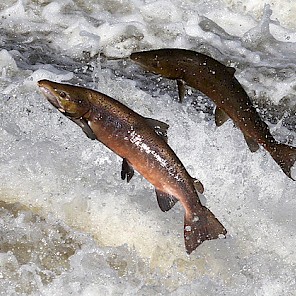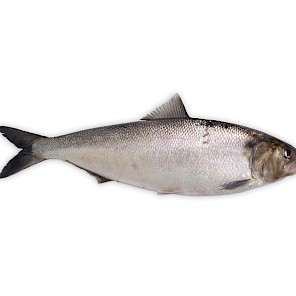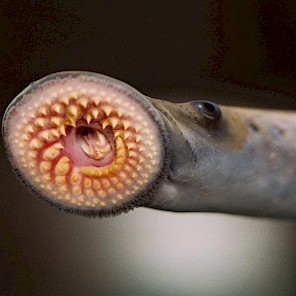| | In this issue of Friday Ocean Findings we feature the status assessments for 4 species of fish that feature on OSPAR's list of threatened and/or declining species. Populations of Atlantic salmon, Allis shad, Sea lamprey and European eel have all suffered as a result of historic threats such as dam building, habitat loss and pollution and face an uncertain future due to emerging threats such as climate change.
These assessments contain our most up to date knowledge on population as well as measures that OSPAR Contracting Parties are taking to mitigate the historic and emerging threats to these enigmatic species. |  | | Atlantic salmon | The status of Atlantic salmon is still poor in Arctic Waters (OSPAR Region I), Greater North Sea (Region II), Celtic Seas (Region III) and Bay of Biscay and Iberian Coast (RegionIV). Its range of distribution has remained stable for the past decade, but abundance and condition are often decreasing. While historical key threats were increasingly affecting populations in the past, many efforts to alleviate their effects have been undertaken in OSPAR Regions I, II, III and IV and the situation is mostly stable or improving. However, new threats are emerging and expanding (e.g. climate change) and will be the key challenges faced by managers and scientists in the coming years. Image courtesy of Walter Baxter |  READ MORE
READ MORE |
| |  | | Allis shad | The status of Allis shad is very poor in the OSPAR Maritime Area. Currently most successful spawning rivers are located in France and Portugal, but in both cases, these populations are threatened. Portugal is a stronghold for this species, particularly in the central and north river basins, i.e. Mondego, Vouga and Minho river basins, where large populations still exist (Almeida et al., 2018; Azeiteiro et al., 2021). There was a very abundant and well documented population in the Gironde Basin (south-west France), but since 2000 both juvenile and adult abundance has declined dramatically (Rougier et al., 2012). During this current assessment period (2009-2021), threats to this species are becoming more significant, mainly due to the construction of dams, fishing in estuaries (e.g. Gironde , Rougier et al., 2012) or at-sea by-catch. There is also a growing concern about new threats (i.e. invasive species, climate change and predation). |  READ MORE
READ MORE |
|
|  | | European eel | The status of European eel is still very poor in all OSPAR Regions where the species occurs, as glass eel recruitment, although stable since 2010, remains at a very low level with no clear sign of an upturn. Eel is a panmictic species which affects its management. While the pressure of commercial fishing on the stock appears to be decreasing in the current assessment period (2010 to 2021), other pressures (dams, turbines, habitat loss, pollution, poaching, diseases and pathogens, climate change, etc.) still pose a significant threat to the species. The European eel remains Critically Endangered in latest (2020) IUCN Red List assessment. |  READ MORE
READ MORE |
| |  | | Sea lamprey | The status of sea lamprey is still poor in OSPAR Regions I to IV (Arctic Waters; Greater North Sea; Celtic Seas; and Bay of Biscay and Iberian Coast). Physical obstacles for the species migration and freshwater habitat loss are the key pressures for the assessed sea lamprey breeding populations. Dams, habitat loss, pollution, still pose a significant threat to the species. Sea lamprey is listed on most of the national Red List in most countries in OSPAR Regions I to IV with status as threatened or near threatened. Image courtesy of T Lawrence |  READ MORE
READ MORE |
|
|
| | |
|